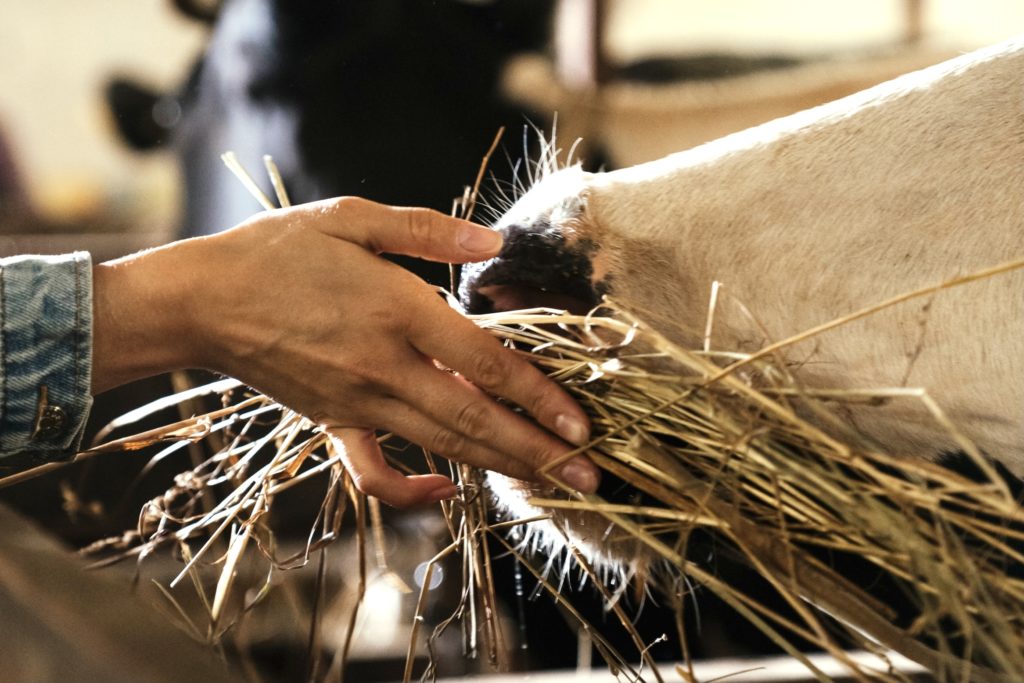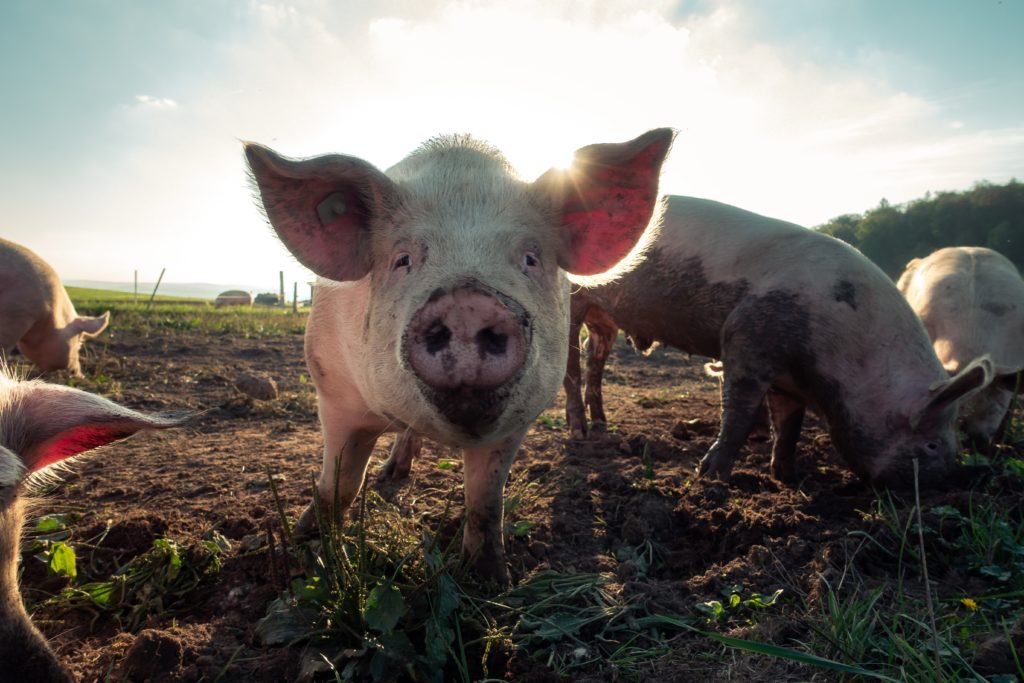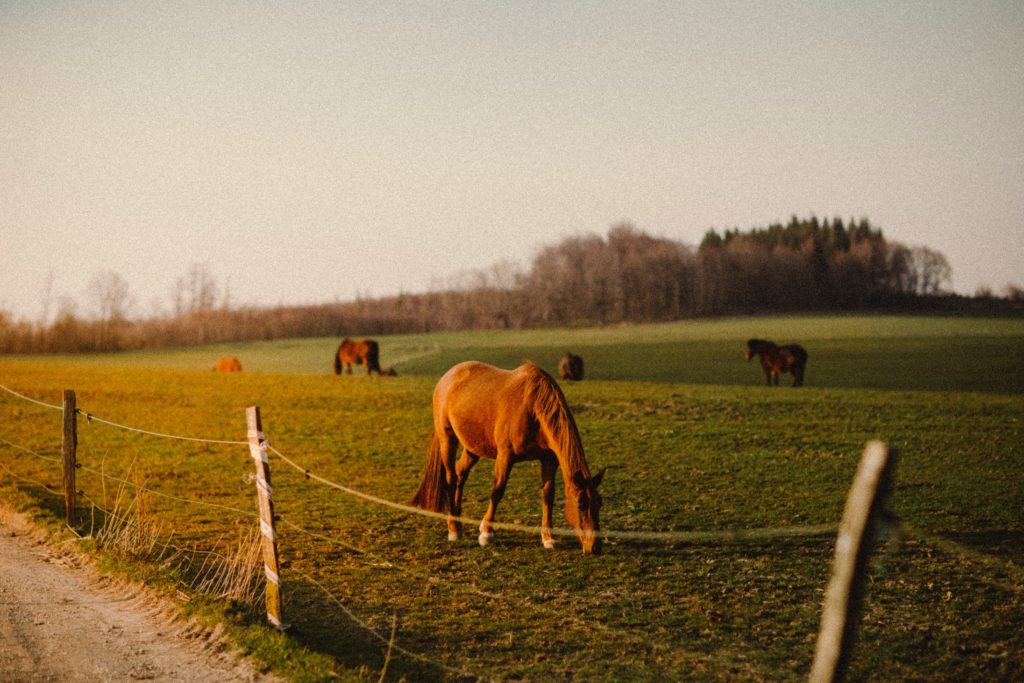
In recent years, the question of the origin of animal foods has increasingly become the focus of public attention. Consumers are actively asking about the way animals are raised and the quality of the resulting products. But one issue that is not often addressed, and yet forms the basis for any animal product, is the nutrition of the animals.
Despite the growing shift towards vegetarian and vegan lifestyles in Europe, the demand for meat is still high. Animals need to be fed abundant and adapted diets to produce healthy meat.
In this context, animal feed requires many different personalization. Not only do other animal species have different requirements, but there are also differences within the same species. For example, the goal of animal husbandry already presupposes the demands on animal feed. Broilers, for example, have different feed than laying hens, and the age and developmental stage of the animals also plays a role.
So, one quickly realizes that the topic of animal feed can quickly become complex, but at the same time offers many starting points for improvement. Algae can play an important role in animal husbandry in terms of animal health and sustainability. Healthier animals mean less expenditure on antibiotics, which in turn has a positive effect on the quality of meat and products.

Algae Feed for Poultry
Laying hens
In order to lay an egg every day, a high supply of nutrients is required. Calcium and phosphorus in particular play a major role. But of course, amino acids, as well as the energy content and sufficient protein supply, as well as the digestibility of the feed must not be forgotten.
Algae feed can also serve as a source of proteins, vitamins, and antioxidants, as well as pigment for the shell and yolk. Experiments have shown that microalgae, especially spirulina and chlorella, can be used without side effects as feed additives in poultry diets to supplement these nutrients.
Broiler
For broiler keeping to succeed in a fairly short time, the fattening feed must have a fairly high content of fats. However, the other nutrients must not be lacking and/or shortchanged.
Algae feed can also have a positive effect on meat quality, e.g. by increasing the concentration of omega-3 polyunsaturated fatty acids and carotenoids, which in turn also has a positive effect on the immune function of the animal. Of course, this is a very important point in terms of husbandry costs, as sick animals generate additional costs and have a negative impact on production.

Algae Feed for Pigs
Similar to poultry feed, pig feed can be differentiated according to the sex of the animal. Whereas in poultry it is a matter of providing laying hens with enough nutrients for abundant egg laying, in sow feeding it is a matter of providing young piglets with an optimal start.
Sows
Similar to the other compositions of feeds, the supply of energy, nutrients, amino acids, minerals, trace elements and vitamins is essential for sows. In addition, however, the form of the feed also plays an important role. In order to ensure the health of the animal, and especially the intestine and its normal functioning, the feed must take this into account.
Early studies showed that feeding some species of microalgae to pigs had no negative effect on growth performance; on the contrary, replacing soy protein in the diet of weaned pigs with a microalgae mixture resulted in less diarrhoea or gastrointestinal disorders.
Pigs
Pigs, in turn, are fattened for meat production and thus go through several fattening phases with different compositions of animal feed, as is the case with broiler feed.
For fattening, high protein content is not the only measure. Supplementary feed is often fed during fattening to meet the fattening requirement with the active ingredients as well as minerals offered. Lysine and other amino acids are important components for the healthy implementation of fattening and can be actively supplemented by microalgae.
Studies have shown that feeding microalgae extracts, and algae feed leads, to increased growth and may have positive health effects when fed to pigs.

Algae Feed for Cattle
Cattle are known to be ruminants and therefore have special requirements for their feed. What is difficult to digest for other creatures with monocular stomachs because of the high proportion of crude fiber, is again very suitable for ruminants.
The main component of any cattle feed is the basic feed which consists of grass, hay, meadows and/ or pastures, etc. The other part of the feed is the compound feed, which is specifically designed for the end product (i.e. milk or meat). The compound feed has a complementary effect and provides the cattle with the important nutrients, which in turn have a decisive effect on the end product.
Dairy cow
Dairy cows, for example, have a high demand for proteins and minerals, including especially calcium and magnesium. When it comes to protein, Chlorella vulgaris is a very efficient source, containing up to 60% crude protein. An interesting product for magnesium supplementation is natural seawater extract, which provides a cheap and sustainable source of magnesium.
Algae feed diets, including Spirulina, increased milk fat concentrations either through more intense acetate fermentation in the rumen or through increased mobilization of body lipids. Intake of the microalgae Nannochloropsis, resulted in the most favorable omega-6 to omega-3 ratio for human nutrition and a fourfold increase in EPA concentration in milk without negative effects on milk fat production.
Beef Cattle
Cattle for fattening are, as the name suggests, bred for the production of meat and should therefore be fed a nutrient-rich diet. The basis here, as already mentioned, is again the basic feed. But above all protein, minerals and trace elements are important as supplements for the formation of muscle-rich, and thus high-quality meat at the desired growth rates.
Compared to steaks from cattle not fed microalgae meal, steaks from cattle fed microalgae meal had 340% higher DHA and EPA concentrations. The DHA result is consistent with previous studies that found a similar increase in DHA content in milk from cows fed microalgae.
Microalgae such as Schizochytrium, which can be offered as powder and/ or oil for DHA and EPA, can improve the fatty acid profiles of meat products.
A major problem plaguing the cattle industry is the huge emission of methane and its consequences on the greenhouse effect. In the U.S., for example, cattle farming contributes an estimated 26.7% of total methane emissions.
Algae seem to offer a possible solution to this problem. Even small quantities, as a supplement to the normal feed, have been shown in studies to reduce the production of methane in the digestive tract of animals. Chlorella vulgaris, in particular, appears to be a promising option for reducing greenhouse gases in cattle.

Algae Feed for Horses
The active “use” of horses on modern farms is rather rare. More often horses are kept as pets, which are not used for work. For the sake of coherence, however, we include horses in this list of farm animals, as it is appropriate to talk about their feed needs as well.
Minerals and trace elements should not be underestimated when it comes to ensuring the health, fertility and performance of horses. Especially in winter, when access to fresh pasture grass is not possible, concentrated feed is essential for the horses’ health. Algae provide a good and natural supplement to the conventional mixes/options of concentrates at these times.
Studies from the University of Florida’s Department of Animal Sciences have shown that dietary omega-3 polyunsaturated fatty acids from algae feed, particularly docosapentaenoic acid (DPA) and docosahexaenoic acid (DHA), in combination with eicosapentaenoic acid (EPA), can reduce inflammation. As mentioned above, the microalgae Schizochytrium in powder and/or oil is an interesting, sustainable and efficient source of DHA and EPA, which offers an alternative to conventional fish oil.
Another interesting microalgae is Chlorella vulgaris. It contains many vitamins, chlorophyll and other trace elements. Chlorella also contains many amino acids, including glutamic acid, lysine and methionine. With a high protein content of up to 60%, chlorella is a high quality protein source that can be easily absorbed by the animal. With its high chlorophyll content and fibrous outer cell, chlorella can increase the number of beneficial bacteria in the digestive tract, supporting the digestive system and consequently the immune system.
Probably the best known microalgae Spirulina also has very useful properties as a supplement for horses. To list just a few of the scientifically proven benefits of a horse feed supplemented with spirulina would include: Supporting respiratory function, improving blood flow and faster recovery after exercise.
Sources
- Tierernährung, das richtige Futter: gut und sicher – verantwortungsvoll – nachhaltig
- https://www.dvtiernahrung.de/branche/tierernaehrung
- Des algues pour réduire les antibiotiques dans les élevages
- https://www.sciencesetavenir.fr/animaux/animaux-d-elevage/des-algues-pour-reduire-les-antibiotiques-dans-les-elevages_103221
- Legehennen und Mastgeflügel
- https://www.dvtiernahrung.de/branche/tierernaehrung/gefluegel
- Auf die Mischung kommt es an: Eigenmischungen für Geflügel glasklar formuliert
- https://www.lwk-niedersachsen.de/index.cfm/portal/1/nav/755/article/25369.html
- Application of microalgae biomass in poultry nutrition
- https://www.researchgate.net/publication/281242184_Application_of_microalgae_biomass_in_poultry_nutrition
- Verdauung und Darmgesundheit beim Schwein unterstützen
- http://www.klausing.com/futterdoc/Schwein/Schwein7_Fachartikel/schwein7_fachartikel.htm
- Evaluation of a partially de-oiled microalgae product in nursery pig diets
- https://academic.oup.com/tas/article/2/2/169/4969820
- Sewage-grown algae as a protein supplement for swine
- https://www.cambridge.org/core/journals/animal-science/article/abs/sewagegrown-algae-as-a-protein-supplement-for-swine/B2A8E7DBF83FE14DB28C53065E2F3E57
- Effects of dietary supplementation with freshwater microalgae on growth performance, nutrient digestibility and gut health in weaned piglets
- https://www.sciencedirect.com/science/article/pii/S1751731116001543
- Rinder zur Ernährung von Milchvieh, Mastrind und Kalb
- https://www.dvtiernahrung.de/branche/tierernaehrung/rinder
- Different microalgae species as a substitutive protein feed for soya bean meal in grass silage based dairy cow diets
- https://www.sciencedirect.com/science/article/pii/S0377840118307065
- Feeding microalgae meal (All-G Rich™; Schizochytrium limacinum CCAP 4087/2) to beef heifers. I: Effects on longissimus lumborum steak color and palatability
- https://pubmed.ncbi.nlm.nih.gov/27898904/
- Key Considerations for the Use of Seaweed to Reduce Enteric Methane Emissions From Cattle https://www.frontiersin.org/articles/10.3389/fvets.2020.597430/full
- Pferdefütterung: Müsli, Pellets & Co.
- https://www.dvtiernahrung.de/branche/tierernaehrung/pferde
- Die Ernährung des Pferdes
- https://www.tierfreund.de/ernahrung/
- Fütterung: Pferde richtig füttern
- https://www.pferd-aktuell.de/ausbildung/pferdehaltung/pferdefuetterung
- DHA Level Effect on Inflammation in Exercising Horses
- https://thehorse.com/178626/dha-level-effect-on-inflammation-in-exercising-horses/
- Which Omega-3 Sources are Best for My Horse?
- https://thehorse.com/168549/which-omega-3-sources-are-best-for-my-horse/
- Chlorella For Horses
- https://holistichorse.com/health-care/chlorella/
- 9 Science-Backed Benefits of Spirulina for Horses
- https://madbarn.com/spirulina-benefits-for-horses/
- Use of the Herb Gynostemma Pentaphyllum and the Blue-green Algae Spirulina Platensis in Horses
- https://www.semanticscholar.org/paper/Use-of-the-Herb-Gynostemma-Pentaphyllum-and-the-in-Kellon/902aafc07c6dfde5d31240ed06e1868fc890b173?p2df
- Spirulina platensis Improves Mitochondrial Function Impaired by Elevated Oxidative Stress in Adipose-Derived Mesenchymal Stromal Cells (ASCs) and Intestinal Epithelial Cells (IECs), and Enhances Insulin Sensitivity in Equine Metabolic Syndrome (EMS) Horses
- https://www.mdpi.com/1660-3397/15/8/237/htm







Comments by Pit Wagner